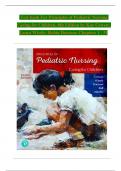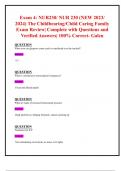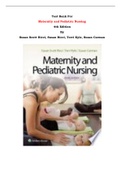Exam (elaborations)
TEST BANK For Principles of Pediatric Nursing Caring for Children, 8th Edition by Kay Cowen; Laura Wisely, Verified Chapters 1 - 31, Complete Newest Version
TEST BANK For Principles of Pediatric Nursing Caring for Children, 8th Edition by Kay Cowen; Laura Wisely, Verified Chapters 1 - 31, Complete Newest Version Principles of Pediatric Nursing Caring for Children, 8th Edition by Kay Cowen; Laura Wisely Principles of Pediatric Nursing Caring for Childre...
[Show more]













